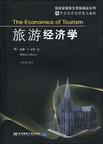旅游经济学
出版时间:2009-8 出版社:东北财经大学出版社有限责任公司 作者:威廉·S.里斯 页数:230 译者:宁传锋
Tag标签:无
前言
The tourism industry is a global giant which provides services to travelers while alsoproviding opportunities to earn income through useful employment and productiveinvestment. I have written this book to help students use the basic methods of micro-economics to understand what is happening in this important and growing industry. Ihave been teaching an undergraduate course on the economics of tourism for manyyears, but I have not found a textbook that could support my undergraduate course onapplying mainstream microeconomic analysis to tourism. This book is intended to filla gap that I see in the array of tourism texts.For many decades economists have been working on various aspects of tourism.Most notably, economists have studied the airline industry, first examining its regula-tion and then following the path of the deregulated industry. This large body of workhas provided important analysis that students can benefit from. Also, a small industryof researchers applies economic impact analysis to tourism. Other areas of tourismhave lacked this depth of attention from economists, but I try to show that much workapplied elsewhere has useful applications to tourism. This book shows, for example,that the Nobel-Prize-winning work of George Akerlof, Ronald Coase, and WassilyLeontief is useful for understanding tourism. It also shows how simple concepts andmethods that economists have usefully applied to the study of the information indus-try are equally useful in understanding the behavior of tourism firms. One of the mostimportant areas where students can improve their insights into tourism firm behavioris pricing. Here some simple economic analysis can clearly show how a firm with dif-ferent kinds of customers and a capacity constraint chooses a price for each kind ofcustomer to maximize profits. This fairly simple economic analysis is important forunderstanding pricing in tourism, especially for hotels and airlines.This book is aimed primarily at advanced undergraduates in hospitality andtourism degree programs, but it may also be useful for students in graduate hospitalityand tourism programs and undergraduate programs in business and economics.This book is primarily intended as the basis for a course on the economics oftourism, but it could also serve as a resource for other courses in tourism, hospitalitymanagement, and other areas of travel and tourism. ! am also hopeful that it willstimulate economics of tourism course offerings in many programs that do not offerthem now.
内容概要
本书根据现代市场经济理论和西方经济学的理论与方法,在充分吸收和借鉴旅游学研究最新成果的基础上,运用多学科的知识与方法,较为全面系统地阐述了旅游经济学的基本理论和方法。
作者简介
威廉·S.里斯,美国西弗吉尼亚大学(West Virginia University)经济管理学院经济学教授。他的研究和教学主要致力于旅游经济学以及微观和计量经济学的其他应用领域。
书籍目录
第1章 绪论 概要 旅游业的经济概念以及问题 创造客户价值和创造员工及企业主收入 供应 需求 竞争 政府管制 旅游行业组织 小结 参考书目第2章 旅游业的价值创造 什么是经济?为什么我们有经济? 收人和增值 旅行社增加的价值 旅行社能够创造多少收入 美国旅游增加的价值 加拿大旅游增加的价值 小结 参考书目第3章 旅游消费者 概要 美国旅行者的特征 美国全国家庭旅游调查 旅游形式 商务旅行者 旅游需求 价格变化的影响 收入变化的影响 影响需求的因素 价格和收入需求弹性 需求价格弹性 需求交叉弹性 需求收入弹性 计算旅游服务需求弹性 客户忠诚度计划 小结 参考书目第4章 供应、需求以及旅游业的增长 概要 古代的旅行和旅游 中世纪的旅游 前现代时期的旅游 大旅游(教育旅行) 现代大规模旅游 供应和需求 需求 供应 成本 企业间的战略互动 小结 参考书目第5章 经济影响:产出、收入以及可持续性 ……第6章 旅游服务定价第7章 民航第8章 自驾车旅游、乘火车以及汽车旅游第9章 住宿和餐饮第10章 邮轮第11章 旅游目的地、旅游活动以及旅游吸引力第12章 旅游中介组织:旅行社、旅游经销商第13章 赌场游戏参考文献索引
章节摘录
插图:An economy is the set of institutions that creates the goods and services society wants toconsume. If an economy is a set of institutions, we must define institution. Some insti-tutions are normal rules of behavior and social interaction. These can be formal, such aslaws and regulations, or informal, such as customs and social behaviors. Private propertyrights and payments for labor services, which are important examples of economic in-stitutions, involve both formal laws and informal social behaviors. Social organizationssuch as physical markets like a local fish market, or electronic markets like the NASDAO(National Association of Securities Dealers Automated Quotation System), or moreabstract markets, like the labor market, are also institutions. Institutions are often verydurable, enduring little-changed for generations or centuries. Or, they can changerapidly. For example, technical change can lead to rapid change in institutions, as withthe introduction of the telephone and later the cellular telephone, the Internet, e-mail,and other changes in electronic communications. These changes have caused manychanges in the rules of social interaction.We have an economy and economic institutions because we want to eat, we wantto be protected from the weather, we want to be warm in winter and cool in summer,we want to be entertained, we want to be mobile, and so on. We have an economy be-cause we are consumers and nature usually does not give us the things that directlyprovide consumer satisfaction. At the most basic level, even if we were to subsist onnaturally growing fruits and berries we would first have to gather them. The naturalfoods we gather may also require some kind of preparation. All of this gathering
编辑推荐
《旅游经济学》:旅游管理英文原版精品系列,萨里经济管理英文教材。
图书封面
图书标签Tags
无
评论、评分、阅读与下载
用户评论 (总计10条)
- 本书的结构由浅入深,并对涉及旅游业的经济学知识进行了突出。读者可自行选择不同侧面进行阅读。
- 原版书要六百多,这本跟你原版一模一样(连页数都一样),才25元。里面还有少量的中文解释,很好!!!
- 没买气死。。。。。。
- 英语原教材,好书!
- 还没看完,中间有些部分都跳过了,难度太大.
- 这本书几乎全是英文的。只有标题是中文,文中个别地方名词解释为中文。我还以为是全中文翻译的书呢。结果白买了一场,因我已有英文书!因此,这样会误导消费者,“译注”,其实就是“注”。
- 原来是原版英文书,还以为是中文翻译版,对照英文版容理解,居然还写上了翻译者的名字,也就翻译几个名词还有标题,而且还翻译得不好,标上译者容易让人产生误会,因为totally是中文的,其实里面全是英文的。下次购买的人要小心了!!!
- 买这本书的目的就是要学习在旅游经济学领域常用的英文词汇和表述方式。
- 萨里的旅游挺知名,但书是刚刚到手,质量很不错,字小了点儿,还有就是那写标注的中文字显得有些多余,呵呵。总之这么低的价格入手,很划算了。
- 英文不难, 纸质好,内容简单易懂
